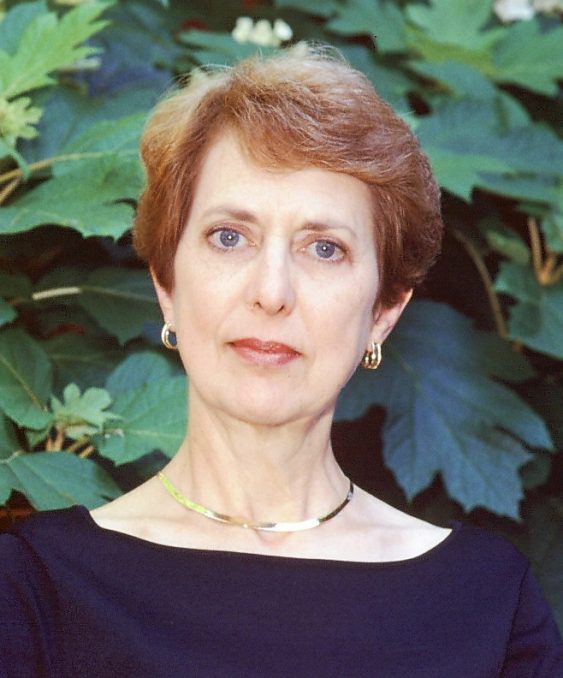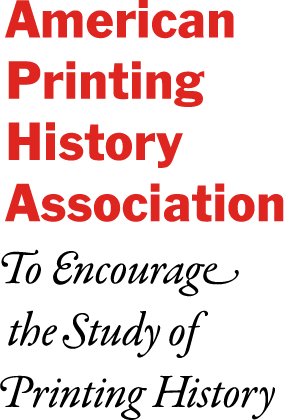
Dr. Savage is 2014 recipient of the Mark Samuels Lasner fellowship, 2020 winner of the Schulman and Bullard Article Prize from the Association of Print Scholars, and internationally recognized as an expert in the field of early modern color printing history. Among the faculty at University of London (UK), and London Rare Book School, Savage was also named Honorary Fellow, Centre for the History of the Book, Oxford University. An advocate for academic collaboration and cross-disciplinary research, Savage’s work, as her nominators observed, lends “new insights into printing processes and practices across several types of media and genres” and “marries solid humanities methodologies with extensive knowledge of technical art history and heritage science.” Prolifically published, some of her most recent work includes a study that uses carbon-dating on late medieval and early modern woodblocks, and serving as co-editor for Printing Colour 1700–1830: Histories, Techniques, Functions, and Receptions (Oxford University Press, 2025).
Susan J. Goldman is recognized for her ongoing distinguished contribution to the study, recording, preservation and dissemination of printing history. In addition to being an award-winning artist, she is a master printmaker who owns and runs Lily Press in Rockville, MD. An equally gifted filmmaker, she is dedicated to the documentation, preservation and conservation of printmaking history, evidence of which can be seen in the video archive she has been creating by virtue of her Printmaking Legacy Project ®. The Project’s website hosts an abundance of individual video interviews and documentaries about remarkable print artists with whom she has worked. Her most recent documentary, “Black Printmakers of Washington, DC: Percy B. Martin & Michael B. Platt”, was released in February 2024 and is being screened at print-related events throughout the country.
APHA’s Annual Award for 1982 was presented to John Tebbel, well-known as a publishing historian by reason of his four-volume History of Book Publishing in the United States (R. R. Bowker). These four volumes, encyclopedic in their scope, were published in 1972, 1975, 1978 and 1981. They comprise a survey of the entire American publishing scene from 1639 to 1980. As part of the program. Mr. Tebbel delivered a stimulating and thought-provoking address on “Sources and the Writing of History,” recounting some of the problems that challenged him during his research and writing of his history of the publishing industry. The talk was enthusiastically received by the large number of members present. It is hoped that Mr. Tebbel’s talk can be published and made more widely available. C
The 2023/2024 Individual Laureate is Kadin Henningsen. Kadin Henningsen (he/him/his), compared to nearly all past APHA awardees, might be considered an “early career” educator, printer, and historian. However, the Committee believes that Henningsen’s scholarship focusing on transgender book history is innovative and extremely important in greater efforts to recover and encourage study of authors and practitioners previously excluded from the bibliographic canon. Henningsen’s curriculum vitae showcases his extraordinary track record of presentations, publishing, and awards. Kadin’s commitment to print history is also evident in his work as a printer, print media teacher, and restoration of nineteenth-century printing presses. As a printer, Henningsen’s work supports his scholarship, and also adds a wonderful visual element to book history. Kadin Henningsen is the kind of active, engaged, and community-minded printer and scholar that will attract new members to APHA. Awarding him as the 2023/2024 Individual Laureate supports efforts toward including diverse perspectives and experiences among APHA members and programming.

Fritz Klinke is a restorer of historic buildings, restaurateur, holder of master blueprints for Vandercook press components, and proprietor of NA Graphics “for all your printing needs.” His resources have helped outfit startup presses and keep existing presses operating. He falls into the somewhat odd but valuable category that 2022 APHA honoree Dr. Edward Petko did: he is a grand enabler and champion. A pillar of the print universe as much as of his home base, Silverton, Colorado, Klinke is, therefore, recognized for his unique capacity to enable and equip the letterpress community.
EDITFritz Klinke’s Acceptance Speech

Irene Tichenor is a print historian whose masterwork centers on printer and typography scholar Theodore Low De Vinne (1828–1914). Author of No Art Without Craft: The Life of Theodore Low De Vinne, Printer, Tichenor has served as APHA Trustee, Vice President for Publications, and President (2000–2002). She is a member of the Grolier Club, past vice president of the Bibliographical Society of America, and holds a PhD and an MLS from Columbia University.
Irene Tichenor ’s Acceptance Speech
Edward Petko

Dr. Petko has quietly promoted the development of printing history and book arts programs throughout the Southwest for decades. An avid collector of presses, type, and letterpress equipment, he has made these precious resources available to a large number of institutions. His desire to encourage interest in the history of printing and to promote continued work with historic printing equipment has succeeded in inspiring incredible growth and excitement in our field. Some of the institutions which have benefited from his largess include Arizona State University, UCLA, UC Riverside, California State LA, Harvey Mudd College, the University of Southern California, and the California State Library among others.
BRAD FREEMAN

Covers of the Journal of Artists’ Books.
Brad has been the publisher and editor of the Journal of Artists’ Books from 1994–2020. This journal earned an international reputation as a forum for lively debate in the growing field of artists’ books during an important period of renewed activity and focus on historical methods of printing. In addition to nurturing this publication and the activities of folks in this field, Brad has been an active printer and educator. His hands-on work editing, designing, and actually printing this publication in lithographic print shops at SUNY-Purchase, New York; Nexus Press, Atlanta; and Columbia College, Chicago, demonstrated the vital role of historic printing technology in a world enduring the rapid technological changes of the digital revolution.

Jenna Rodriguez, Print Production Fellow, 2012. MFA Interdisciplinary Book Arts Program, Columbia College Chicago.
Amos Paul Kennedy Jr has introduced thousands of people worldwide to the historic traditions of printing by sharing hands-on activities celebrating wood type and antique presses. Using these historic tools he has brought groups together to explore their aspirations utilizing the power of the press to print ideas and then distribute and display them in their communities as handmade posters. His remarkable work has helped build community while sharing the history of this essential technology.
Frank Romano, Professor Emeritus at the Rochester Institute of Technology, has been a remarkable industry leader in this era of revolutionary change in the graphics industry. In addition to his teaching and research responsibilities at several universities, and work providing professional assistance to industry and government, he has researched and authored important books on the dynamic changes in the worlds of type and printing. He has served as founding editor and publisher for at least eight professional journals and continues to write monthly in the graphic industry’s most prominent publications. He has spoken at almost every industry conference for decades. He is President of the Museum of Printing in Haverhill, Massachusetts, a renowned repository for archives of metal and phototype and home to an impressive stable of historic presses and typesetting equipment.
Rich is a former professor at West Virginia University, Morgantown and the author of “Origin of the American Point System for Printers’ Type Measurement”, the standard reference on that subject. It is clearly written, well-illustrated, and easily understood by the general reader. More recently, he wrote “Tolbert Lanston and the Monotype—The Origin of Digital Typesetting”, published by the University of Tampa Press. This very thorough history of the invention and development of this essential American typesetting system fills a gaping void in the history of machine composition, providing an in-depth look both into the rich history of the Philadelphia company that created the Monotype system, and even at some of the people who have made use of Monotype equipment in the 21st century. I cannot overstate the value and significance of this book. And don’t miss the appendices which contain wonderful extra detail.
As if two essential books are not enough, Richard L. Hopkins was the driving force behind the establishment of the American Typecasting Fellowship in 1978, as well as helping to ensure its continued existence through his regular publication of the ATF Newsletter—usually printed letterpress in whole, or in part. Richard (Rich to his friends, who are legion) edits this deluxe document, often writing the bulk of its contents. The ATF meets biannually and its members strive to keep alive the traditions of metal type and its manufacture. This organization is unique in the world, and it is the direct offspring of the ideas and inspiration of Richard L. Hopkins.
In concert with the ATF Rich opened up his home and foundry yearly to conduct weeklong sessions of hands-on instruction in the operation of typecasting machinery. His Monotype University provided essential training in the use of complex equipment and has been the springboard for a wide range of type-making wannabes. A new generation has found inspiration through this instruction.
In his own words, “My goal through writing, typecasting, and printing is the preservation of the equipment and the technology associated with letterpress printing and the making of printers’ metal type.” He has accomplished all of this and more. Richard L. Hopkins life’s work embodies everything that the American Printing History Association strives for, thus this nomination for this prestigious individual Laureate Award.
Richard Minsky obtained his first printing press at the age of 13 to replace rubber stamps he had been using. In 1968, he graduated cum laude in economics from Brooklyn College. Minsky was awarded a fellowship at Brown University, where he received his master’s degree in economics. He pursued a Ph.D. at The New School for Social Research, but left after two years to pursue bookbinding, art and music. He studied bookbinding in Providence, Rhode Island with master bookbinder Daniel Gibson Knowlton, whom he met at the John D. Rockefeller, Jr. Library at Brown University. In 1974, Minsky founded the Center for Book Arts in Manhattan, the first organization of its kind in the United States dedicated to contemporary interpretations of the book as an art object while preserving traditional practices of the art of the book. In 1978, he was named a US/UK Bicentennial Fellow in Visual Art by the National Endowment for the Arts and the British Council. In 2004, Yale University Library acquired Minsky’s archive of published fine art editions and other works. The Robert B. Haas Family Arts Library at Yale University hosted an exhibition of 50 years of Minsky’s work from August to November 2010 in the book trades and related arts.






